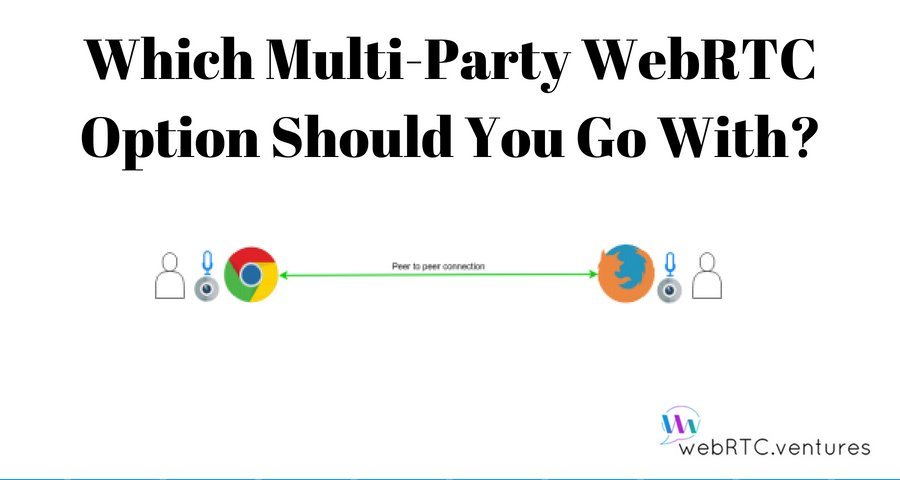With WebRTC, you have a number of options for adding more than one user to the connection in order to make it a multi-party video call. We know that WebRTC provides real time communication using video, audio and data, natively on the browser and through a secure peer-to-peer connection. Of course, you and I both know that we also need signaling and a couple of STUN/TURN servers to do the trick. But in order to simplify the explanation of multi-parties we are going to leave out these components; however, you can read more here. Just remember that they are still there. So which multi-party webRTC option should you go with?
We’ve discussed the different strategies that exist in order to enable multi-party on WebRTC. You’re probably wondering which one you should use in your business? Psst… you want to know a crazy, but honest answer?
Probably none of them, well, more like none on its original form but rather with some sort of combination or mutation. The truth is that each strategy has its own advantages, disadvantages and application fields. The most simple choice is Mesh if you don’t need to support more than 3-5 users on the same call and you don’t want a server in the middle. If you do want more than that number of users but your budget is limited, SFU would be your best choice. But if cost is not a problem, you’ll probably want to go with MCU.
Now if you want to complicate things a bit more, you’ll probably want to use Mesh to support a group of calls with a low number of users, then use a sort of Partial Mesh when the number of users increases. But when the users outreach a specific number, you can offer a kind of “premium” service supported by a SFU/MCU server. With this, you can get creative to combine and mutate the three alternatives to get what you want.
In the end it will all depends on your business requirements.
Want to learn more?
To learn more about multi-party webRTC and other ways to add users to your connection, or need expert help in determing the right option for your business, contact us today.











